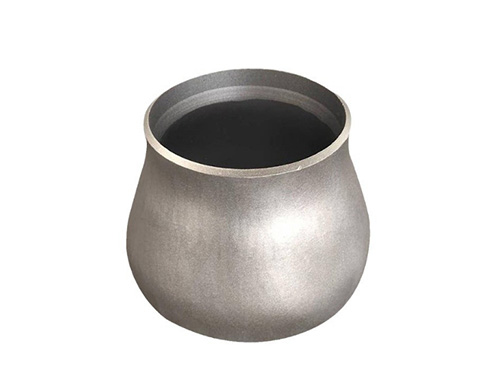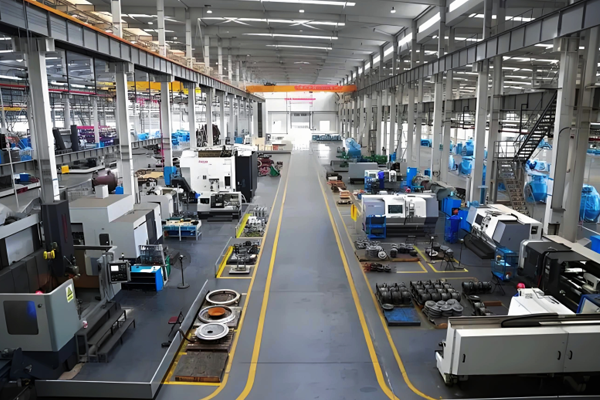
Concentric Reducer
Concentric reducer is a type of pipeline connector with different diameters at both ends but overlapping centerlines. It is mainly used to achieve smooth transition of pipe diameter in straight pipelines and is widely used in industrial pipeline systems such as petroleum, chemical, water treatment, HVAC, etc. The following provides a detailed introduction from the aspects of structure, characteristics, differences from eccentric reducers, and application scenarios:
1、 Basic structure and parameters of concentric reducer
The core feature of concentric reducers is that the centerlines at both ends completely coincide, forming a symmetrical cone-shaped (or truncated cone) shape as a whole. The structural parameters include:
Big end diameter (D): the diameter of one end connected to a large-diameter pipeline;
Small end diameter (d): the diameter of one end connected to a small-diameter pipeline;
Length (L): The distance between the two end ports measured along the centerline, which must comply with industry standards such as GB/T 12459, ASME B16.9, etc;
Wall thickness (S): determined according to the pressure rating of the pipeline system, it needs to match the wall thickness of the connecting pipeline to ensure pressure resistance.
Its structure can be simply understood as a "symmetrically contracted cone", which achieves a transition from a large diameter to a small diameter through uniformly inclined side walls. The inner wall is smooth without steps, which can reduce local resistance during medium flow.
2、 Core Features
Symmetry: Due to the coincidence of the centerline, the shape is symmetrical, and the pipeline still maintains a straight line after installation, without changing the original centerline position of the pipeline.
Low resistance: The inner wall transition is smooth, and there is less turbulence when the medium (gas, liquid, etc.) flows through, resulting in relatively small energy loss (pressure loss).
No directional restrictions: There is no need to distinguish the direction during installation (unlike the "top flat/bottom flat" of eccentric reducers), only ensuring that the large end is aligned with the large pipe and the small end is aligned with the small pipe.
Widely applicable: can be used for pipeline systems made of various materials (such as carbon steel, stainless steel, alloy steel pipes, etc.), with mature manufacturing processes.
3、 Manufacturing process
The manufacturing process of concentric reducers is selected based on the diameter, material, and pressure rating. Common methods include:
Stamping forming
Suitable for small and medium-sized pipes (such as DN25-DN300) and thin-walled pipe fittings (such as stainless steel and low carbon steel).
Process: Stamping the steel pipe blank or steel plate into a conical shape, forming it in one go through a mold. Seamless pipe blanks can reduce welding seams and have better pressure resistance.
Forging Forming
Suitable for large-diameter and high-pressure scenarios (such as DN300 and above, pressure ≥ 16MPa), the material is mostly alloy steel or high-strength carbon steel.
Process: The heated steel billet is forged into a conical shape, and the size is adjusted by mechanical processing, which has high strength but high cost.
Welding Forming
Suitable for non-standard sizes or temporary requirements, cut two sections of steel pipes with different diameters and weld them into a conical shape, ensuring that the centerlines coincide and the welds require non-destructive testing.
4、 Typical application scenarios
Concentric reducers are suitable for the following scenarios due to their symmetrical structure and low resistance:
Transition of pipe diameter in straight pipelines: Smooth connection of different pipe diameters can be achieved in straight sections without adjusting the height of the pipeline centerline (such as the transition from DN200 pipeline to DN150 pipeline).
Clean medium transportation: When transporting liquids (such as water, oil), gases (such as compressed air) or steam without impurities, priority can be given to using them as there is no risk of retention.
Low pressure or atmospheric pressure system: In pipelines with low pressure (such as PN ≤ 1.6MPa), there is no need to consider safety issues caused by gas-liquid retention (such as cavitation and blockage).
Linear connection of equipment inlet and outlet: For the inlet and outlet pipelines of equipment such as heat exchangers and storage tanks, if the equipment interface has a different diameter from the pipeline and the centerline is consistent, concentric reducers can be used.
5、 Selection and installation precautions
Caliber matching: Ensure that the diameter of the large and small ends is consistent with the nominal diameter (DN) of the connecting pipeline to avoid stress concentration caused by forced assembly.
Pressure rating: Select fittings with corresponding wall thickness based on the nominal pressure (PN) of the pipeline system (such as thick walled forgings for high-pressure systems), referring to standards such as ASME B16.9 (American standard) or GB/T 12459 (national standard).
Material compatibility: The material of the pipe fittings should match the material of the pipeline (such as stainless steel pipes with stainless steel reducers) to avoid electrochemical corrosion.
Welding requirements: When welding with pipelines, it is necessary to ensure that the two end ports are perpendicular to the centerline of the pipeline. The weld seam must be fully welded and subjected to pressure testing (such as hydrostatic testing) to prevent leakage.

+86-15533769121

Jango

jango@yuntaopiping.com

Beixiaozhuangzi Industrial Zone, Mengcun Hui Autonomous County
Copyright © 2025-2026 http://www.yuntaopiping.com. All Rights Reserved Yuntao Piping Group.,Ltd.Copyright



